Post-Concussion Syndrome Leg Weakness: Causes and Treatment
Leg weakness after a concussion can significantly impact mobility and daily life. Patients may feel their legs are untrustworthy, worry about falling, or contend with stiffness and fatigue.
Published peer-reviewed research shows that Cognitive FX treatment leads to meaningful symptom reduction in post-concussion symptoms for 77% of study participants. Cognitive FX is the only PCS clinic with third-party validated treatment outcomes.
READ FULL STUDY
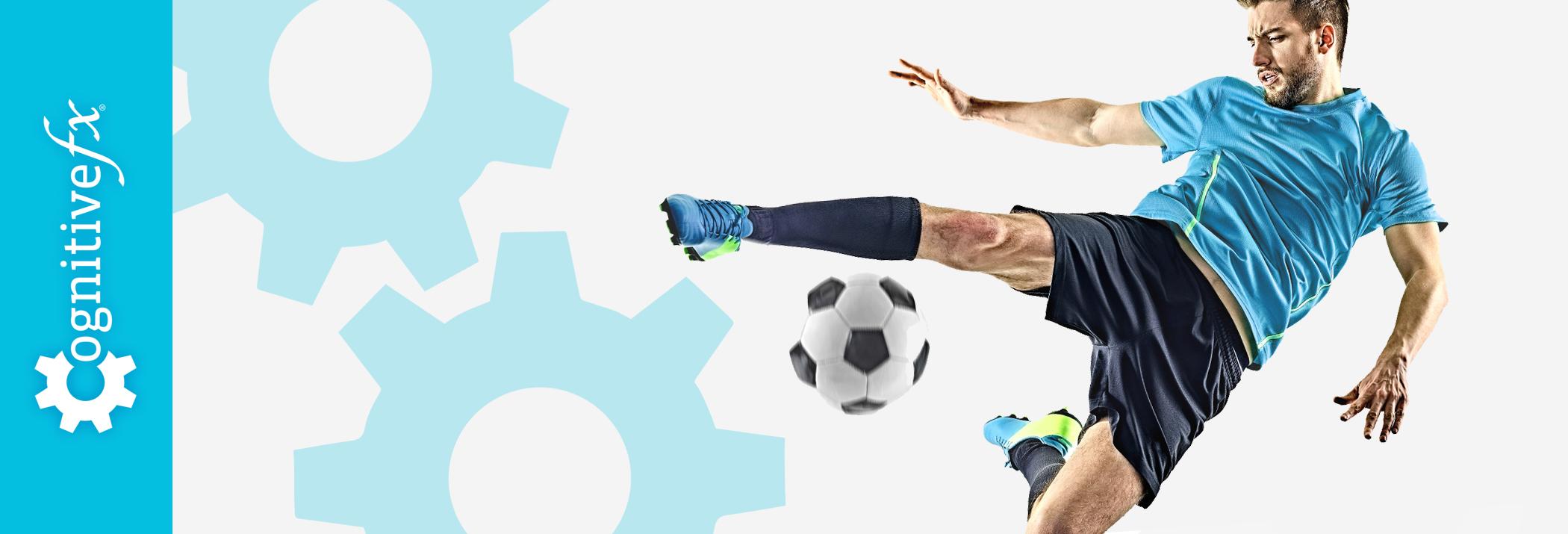
If you ask the average American which sport causes the most concussions, they’re probably going to say, “football.” It’s a contact sport with violent collisions on many plays. Football players take repeated hits to the head and often suffer concussions.
But what about soccer? Many people are surprised to find that soccer ranks among the top five sports causing concussions in both genders. For women, it’s actually the #1 concussion-causing sport.
If you’re a soccer player, this might not be surprising news. You might have had a concussion or two from playing soccer, and if not, you probably know others who have. But you might have a lot of questions about concussions from soccer. In this article, we’re going to talk about:
If you’re experiencing symptoms that won’t resolve after a sports concussion, you’re not alone. 95% of our patients experience statistically verified restoration of brain function. To see if you are eligible for treatment, schedule a consultation.
Note: Any data relating to brain function mentioned in this post is from our first generation fNCI scans. Gen 1 scans compared activation in various regions of the brain with a control database of healthy brains. Our clinic is now rolling out second-generation fNCI which looks both at the activation of individual brain regions and at the connections between brain regions. Results are interpreted and reported differently for Gen 2 than for Gen 1; reports will not look the same if you come into the clinic for treatment.
What is a concussion? We’ll look more in depth at what happens in the brain during a concussion later in this article, but basically, a concussion is a non-life-threatening head injury that causes inflammation and damage to cells in the brain. It can have short and long-term effects.
Let’s look at some common concussion myths and truths about concussions.
Myth: You didn’t have a concussion if you didn’t get knocked out.
For many years, people mistakenly thought you had to get knocked out to have a concussion. Anything less? Brush it off and get back into the game. We now know this is false. While losing consciousness — even briefly — is indeed a sign of a possible concussion, studies show that 90% of diagnosed concussions occur without loss of consciousness.
Myth: You have to hit your head to have a concussion.
Sure, many concussions result from a head impact with an object, such as another person’s body, a soccer ball, or even the ground. But you can also get a concussion as a result of your head whipping back or to the side quickly, or from coming to an abrupt stop. Basically, anything that causes your brain to crash into your skull can cause a concussion.
Myth: If I don’t have the most common concussion symptoms, I don’t have a concussion.
Some of the most common symptoms associated with a concussion are confusion, headaches, dizziness, and nausea. However, not everyone experiences these symptoms; your symptoms may be less obvious.
Some people who are normally kind and patient become extremely irritable, angry, or aggressive. Anxiety and depression are concussion symptoms that are easily attributed to other causes. Some people might have some difficulty concentrating, but they still do well in school. Not everyone experiences the same symptoms, so it’s important to get checked out if something unusual is going on.
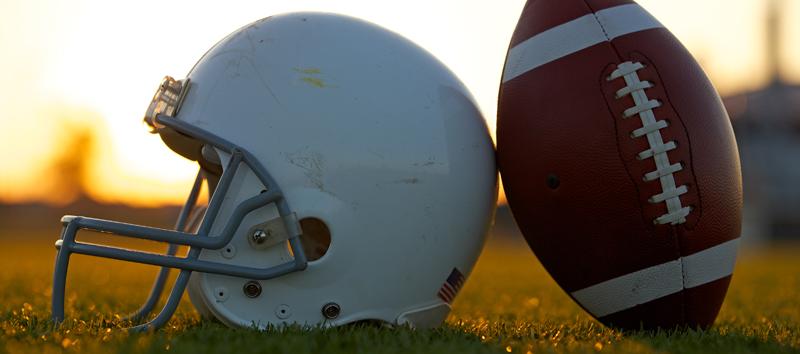
Fact: Football has the highest concussion rate of all sports.
In high school sports, more than 60% of diagnosed concussions come from playing football. For females, however, soccer is the sport that results in the most concussions. Approximately 5% of soccer players sustain a brain injury every year.
It’s estimated that there are between 1.6-3.8 million sports-related and recreation-related concussions in the United States every year, and that 10% of all athletes playing a contact sport suffer a concussion. For those aged 5-18 years, the most common recreation-related causes of concussions are bicycling, football, basketball, playground activities, and soccer.
Fact: Female athletes have more concussions than males.
While most studies of concussions have focused on male athletes, recent studies show that female athletes are actually at higher risk for concussions than male athletes.
In a recent study of high school athletes, concussion rates in sex-comparable sports (sports that both girls and boys play) were higher in girls than boys. This same study showed that females had a higher rate of recurring concussions than males did. Another study revealed that between 2010-2015, the rate of concussion was higher in girls’ high school soccer than in boys’ football.
At the collegiate level, female athletes had a higher rate of concussion in all sex-comparable sports except lacrosse, and female soccer players sustained more concussions than male soccer players.
Researchers are still studying reasons why women have a higher concussion risk than men do, but they have suggested a few possibilities:
That said, there is a chance this research might be influenced by reporting rates. Some researchers suggest that more women than men report concussion symptoms, resulting in a seemingly higher percentage than there really is.
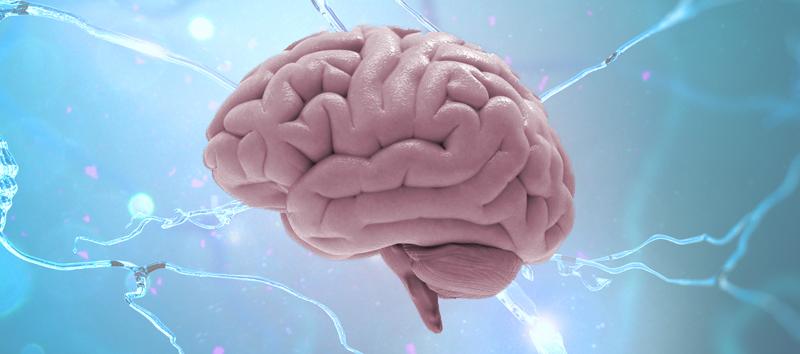
The brain is a complex system of nerve cells, proteins, and blood vessels. The billions of nerve cells form the communication network that controls our thoughts, feelings, senses, and movements. They communicate within the brain and send and receive messages to the rest of our bodies.
Arteries and veins in the brain move blood that carries oxygen to these cells. The cells need oxygen to perform all the tasks they must do, such as helping you understand what you read, or remember things, or even tell your body to produce the hormones it needs in the right amounts and at the right time.
The brain stem connects the brain to the spinal cord. It controls some of our most basic body functions, such as breathing, blood pressure, and heart rate.
The brain is enveloped in fluid inside our skulls and covered by a protective membrane. The purpose of this is to cushion it and protect it against impact with the skull, which acts as a protective cage.
Concussions happen when the soft, vulnerable brain crashes against the hard, bony skull. This can cause several problems:
Our brains can bruise just like the rest of our bodies. This leads to inflammation and small amounts of bleeding. There isn’t a lot of extra room inside the skull, so swelling or blood clots that form can press against blood vessels and limit the amount of oxygen delivered to cells.
Minor tears in the blood vessels of your brain can cause fluid, including blood, to leak out where it’s not supposed to. This might happen when blood vessels are stretched too far. When you’re playing soccer, this could happen when someone runs into you unexpectedly or the ball hits you in the head. You can’t brace for impact, and your head whips back or to the side with a lot of force.
The impact can damage nerve cells. When that happens, the communication system within your brain can have problems. Messages that normally follow a certain route might not be able to get through. They have to find another, alternate route, which is going to be slower and much less efficient, leading to problems such as memory loss, fatigue, and trouble sleeping.
If you’re experiencing symptoms that won’t resolve after a sports concussion, you’re not alone. 95% of our patients experience statistically verified restoration of brain function. To see if you are eligible for treatment, schedule a consultation.
Concussions can happen any time your body or head gets jostled enough to cause your brain to impact the skull. You could just trip and fall unexpectedly and end up with one. However, concussions from soccer tend to stem from several common causes.
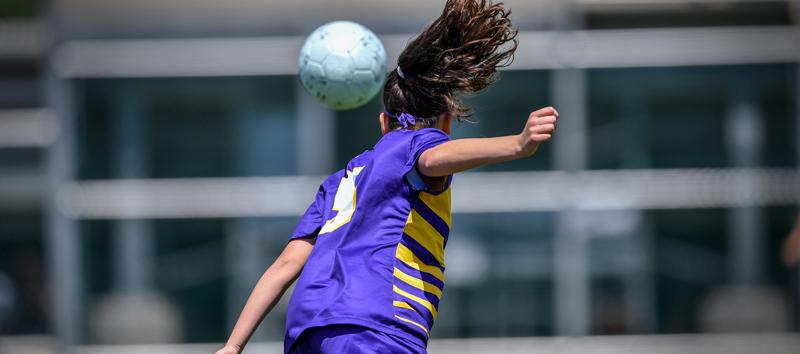
Is heading the ball dangerous? Does it cause concussions? As concussion awareness has increased in recent years, more people are asking these questions, and more researchers are studying these issues.
A study published in 2015 found that 30.6% of high school boys’ concussions and 25.3% of girls’ concussions happened while heading the ball. However, they determined that it was the body-to-body contact from players fighting to get the ball that usually caused the actual injury, not necessarily heading the ball itself.
Some argue that soccer players train to head the ball, and when done correctly, it’s not dangerous. However, a small 2016 study showed that heading the ball exhibited immediate, but temporary, changes to brain function. Other researchers found evidence of long-term brain changes among soccer players who frequently headed the ball. Researchers are looking into the possibility that cumulative damage results from these subconcussive hits.
So, unfortunately, there’s no definitive answer to these questions. Until there is, players need to be aware of the potential dangers of heading. Don’t ignore or minimize any symptoms that you think might be the result of heading.
The most common cause of soccer concussions is body-to-body contact. The 2015 study referenced above showed that 68.8% of boys and 51.3% of girls studied sustained their soccer concussions as a result of body-to-body contact during play. It can happen when heads knock together, but any body part to the head can result in injury, including a concussion. Soccer is a sport in which everyone is aggressively fighting over one ball, so collisions are bound to happen.
If you’re actively trying to head a ball, you’ve trained for that and are prepared for that action. Your neck and body are braced for the impact. However, unexpected impacts are another matter.
While soccer is one of the most popular sports in the world, it’s also a sport with one of the highest injury rates and most sports-related concussions out there.
Due to the nature of the sport, the reality is that many concussions just can’t be prevented, no matter how hard players try. When bodies are aggressively battling over a ball, sometimes you just can’t get out of the way. However, we’ll look at some factors that might prevent, or at least reduce, concussions.
We know that heading is the one activity that leads to the highest percentage of concussions, and we know that many people are concerned about the long-term effects of heading on the brain.
Researchers also believe that children are more vulnerable to concussions for several reasons. For one thing, they have weaker neck muscles. The nerve fibers in their brains haven’t fully developed yet and are also weaker. Their brains are lighter and disproportionately sized, making head impacts cause more damage than they would to older humans.
For these reasons, in 2015, the U.S. Soccer Federation decided to ban heading for young athletes (children under 10 years of age) and to limit heading in practice for children between the ages of 11-13 years of age. The intention is to reduce concussions and try to prevent long-term brain degeneration, which might lead to the development of chronic traumatic encephalopathy (CTE).
Yet not everyone agrees that banning heading at any level will prevent concussions. Some argue that allowing players to properly train heading in practice, even at young ages, will strengthen their skills and reaction times in play.
Others believe that heading itself isn’t the problem but that reducing body-to-body contact is the key to preventing soccer concussions. They blame the increase in aggressive play without penalty for the increase in violent bodily contact.
American football players take to the field in helmets and padding. Soccer players? They wear shin guards. Goalies also wear gloves. With the high rate of head injuries that soccer players suffer, would some kind of safety equipment help?
The problem is that most sporting helmets are designed to help prevent traumatic brain injuries, such as skull fractures. They aren’t really designed to prevent concussions because they can’t stop the brain from sloshing around inside the skull. However, studies are being done on some newer football and hockey helmets with thicker padding which are designed to reduce the intensity of impact that causes concussions.
Some players now wear approved soccer headbands in hopes that the headbands will reduce soccer concussions. The Virginia Tech Helmet Lab tests soccer headgear in simulated collisions and claims that some will reduce head injuries significantly. However, other studies carried out in live play showed that they made no difference in the number of concussion injuries.
The effectiveness of a soccer concussion headband might depend on the area of impact. If you get hit in the face by a ball at high speed and it forces your head to whip around, the headband won’t help. If the impact happens in just the right place, it might make a difference.
The good news for goalies who crash into goal posts is that padding the goal posts may prevent or reduce injuries. Studies have been limited though, and depending on how the goalie hits, padding may also be ineffective.
Screening athletes for vision problems before play could be an effective way to actually help prevent sports-related concussions. Many vision problems go undetected if eyesight function appears to be fine. For example, if you go to a regular eye checkup, you may be told that your eyesight is 20/20 and everything looks fine.
However, there are other vision problems that are not detected by a typical vision screening, such as problems with depth perception, eye tracking, and peripheral vision. For example, people with eye tracking problems have a hard time following moving objects in sports. If you’re a soccer player and you have an eye tracking problem, you might be more likely to collide with other players or to get hit in the face with a ball, thus increasing your chances of getting a concussion.
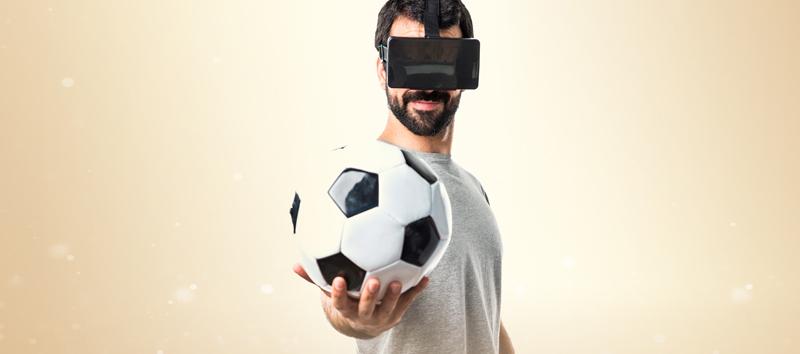
Virtual reality training is on the cutting edge of performance enhancement in athletics. It’s not something that is available to the average athlete yet, but several companies, such as Be Your Best, Rezzil, and the Android mobile app SoccerDream are working with elite players to increase their performance on the field by practicing perception and awareness to increase successful passing.
Perception and awareness are important skills in avoiding injury as well. If you can increase your spatial awareness and become more skilled in using your peripheral vision, you might make better decisions and avoid injury-causing collisions.
Many sports have implemented baseline testing for their athletes. These are balance and cognitive tests taken before the season begins. The results can be used as a comparison if the athlete is suspected to have suffered a concussion. One drawback to this kind of testing, however, is that some athletes purposely perform poorly on the pre-season test so that a post-test might not indicate impairment.
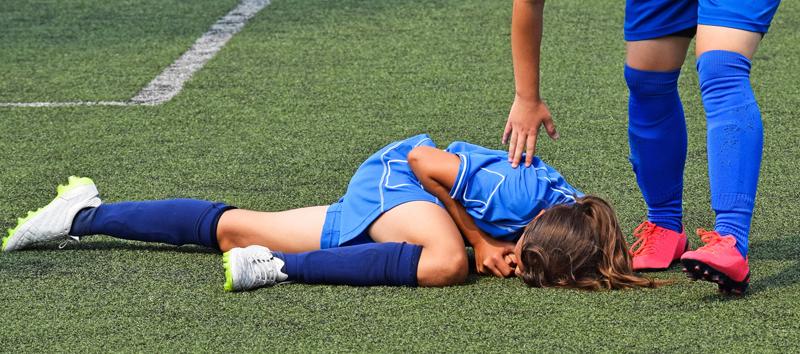
Many organizations have created and implemented sideline protocols to evaluate a player who may have sustained a concussion in play. Many of these protocols are suggestions included in educational awareness initiatives. They include:
If these recommendations are implemented and followed at all levels of the sport, they will help prevent further injury to the athlete and reduce recovery time.
A simple vision and balance check on the sidelines is one way to quickly identify a possible concussion. Ask the player to stand on two feet and close his eyes. Does he have trouble balancing? Having trouble balancing is a sign that your basal ganglia is not working correctly (a clear indication of a concussion).
Testing for vision problems is another simple way to determine if a player has suffered a concussion, since vision is often immediately affected. A recent study showed that a simple, inexpensive vision test, the 2-minute King-Devick test, is effective in indicating probable concussions.
Additionally, some virtual reality companies are developing goggles and portable eye-tracking devices for the purpose of quickly testing for vision abnormalities that indicate a possible concussion.
Various studies show that approximately 30-55% of sports concussions go undiagnosed. Why?
One reason is that players don’t always report symptoms they’re experiencing. Maybe they don’t think the symptoms are serious enough, or that they’ll go away quickly. They might purposely hide symptoms because they don’t want to lose playing time or let the team down.
Part of the purpose of concussion awareness initiatives like “Recognize to Recover” is to educate players, coaches, and athletic trainers about concussion symptoms and the dangers of not getting properly evaluated and treated immediately.
It’s important to support players who self report but also to be aware of the behavior of teammates. Does a player look oddly confused? Does she suddenly look like she’s not trying? Is he making mistakes that are atypical? Step in, ask questions, and push for evaluation if there is any possibility of a concussion.
It’s important to identify a concussion and remove an athlete from play immediately, because athletes are three to four times more likely to sustain a second concussion within the same competitive season as the first. Suffering multiple concussions leads to a higher incidence of long-term symptoms, longer recovery, and the increased possibility of developing post-concussion syndrome.
If you’re experiencing symptoms that won’t resolve after a sports concussion, you’re not alone. 95% of our patients experience statistically verified restoration of brain function. To see if you are eligible for treatment, schedule a consultation.
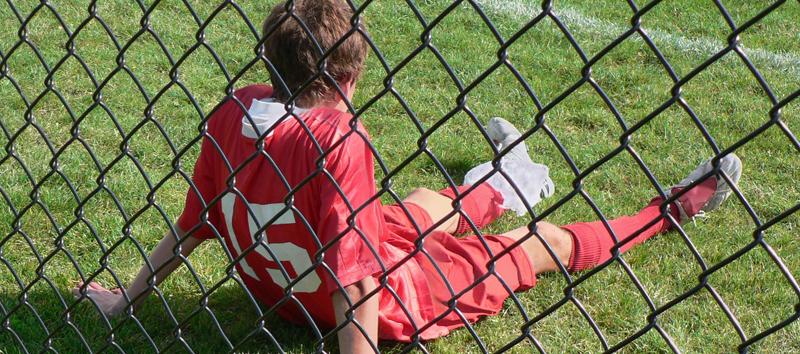
Most players who’ve been diagnosed with a concussion want to know how soon they can get back to playing. Unfortunately, there’s no simple answer to this question. Every concussion is different and has a different recovery timeline. If you want to know more about recovering from a sports concussion in general, we’ve written an article that might answer many of the questions you have.
If you’re a soccer player recovering from a concussion, here are some suggestions to help you during this frustrating time.
Note: Sam suffered from soccer concussion symptoms for five years. Nothing seemed to help, until she went through a week of therapy for post-concussion syndrome at our clinic. Now, she’s working and wrapping up her degree. To read about her recovery, click here.
Mild exercise soon after a concussion is actually crucial to concussion recovery. (Read more about that here.) The key is not to push yourself to the point your symptoms start worsening. You want to keep your activity at the sub-symptom level.
You could do this by doing some safe, low-key practice drills with teammates at practice. Just don’t do anything that puts you at risk of having another concussion. Practicing heading, or anything that gives you a headache, is not a good idea during this time!
Spending this time with your teammates is also helpful. Social interaction and having a good support system are just as important as your physical recovery. In fact, it helps your physical recovery.
Many of the athletic patients in our clinic report pain and tightness in the neck muscles. Since many soccer concussions involve the neck being forced back or to the side with a lot of force, it makes sense that this area might hurt. Doing neck stretches can help reduce the pain and tension. A neck and shoulder massage might also be helpful if you have the resources for that.
Here’s a chart we give patients who experience neck tension:
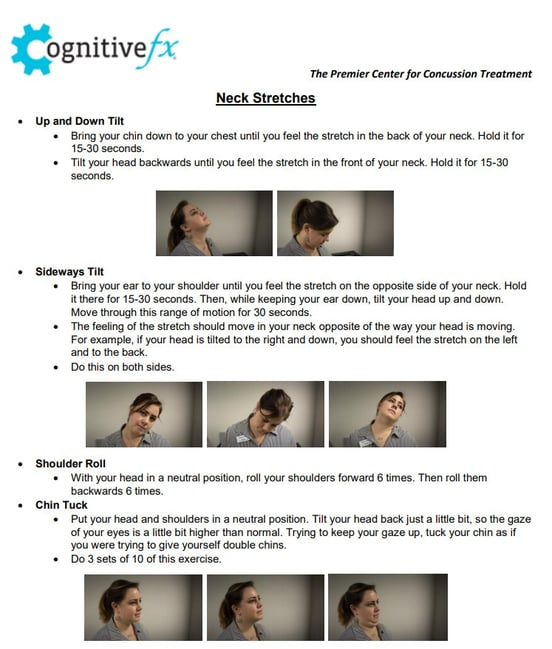
One of the most important tools in the recovery process is patience. Be patient with yourself. Be patient with your recovery. It’s never going to happen as quickly as you want, but you only get one brain during your lifetime, and you don’t want to risk further injury.
Soccer is one of the most popular sports in the world, but it’s important to treat it as the dangerous sport that it is and to take brain health and brain injury seriously. If you or anyone you know has possibly suffered a concussion, seek medical attention.
If you’ve had symptoms of a concussion that haven’t gone away after a few weeks, you may have post-concussion syndrome. We talk about how to find a good clinic in this post.
If it’s been two months or more since your concussion and you’re still suffering from symptoms, there is hope. 95% of our patients experience statistically verified restoration of brain function. To see if you are eligible for treatment, schedule a consultation.

Dr. Alina K. Fong received her Ph. D. in Clinical Neuropsychology with an emphasis in neuroradiology from Brigham Young University. She received the national American Psychological Association Clinical Neuropsychology Division 40 Graduate Student Research Award in 2004 for her research on "Cortical Sources of the N400 and 'The N400 Effect." Dr. Fong's interest in brain mapping soon turned to functional MRI, and since then, her research efforts have been focused on the clinical applications of fMRI.
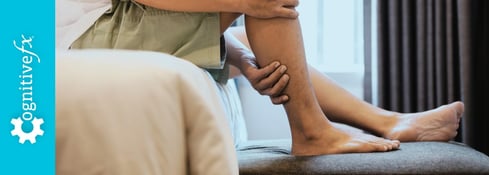
Leg weakness after a concussion can significantly impact mobility and daily life. Patients may feel their legs are untrustworthy, worry about falling, or contend with stiffness and fatigue.
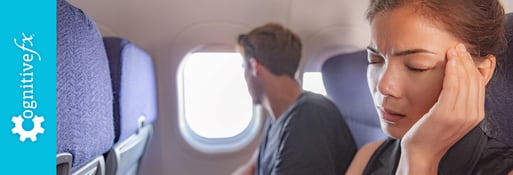
[Note: This article was written during the coronavirus (COVID-19) pandemic. We recommend that you check the Centers for Disease Control and Prevention (CDC) for travel advisories and health...

Many people are surprised to learn that concussions can have long-term effects if left untreated. Chronic concussion syndrome is a less common term for persistent post-concussion symptoms (also known...

You’d think a family of eight with the foresight to pull their children out of school earlier than the rest of the nation would be safe during the COVID-19 pandemic. Instead, seven out of the eight...

The type of head injury doctor you need to see depends on the type of injury you’ve experienced and how long ago the injury occurred. Doctors who excel at concussion treatment, for example, are often...

Returning to work after a concussion—especially if you’re still experiencing symptoms—can be a difficult and uncertain process. There’s no one-size-fits-all answer. For many patients, it’s possible...
Published peer-reviewed research shows that Cognitive FX treatment leads to meaningful symptom reduction in post-concussion symptoms for 77% of study participants. Cognitive FX is the only PCS clinic with third-party validated treatment outcomes.
READ FULL STUDY